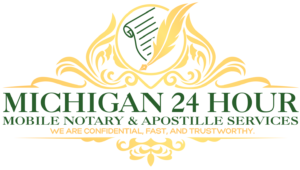It’s no surprise that the Northville area is rich with history. With so many historical sites within the city limits, it’s easy to find something new each time you venture out of your neighborhood. One of the newest attractions in Northville is the Mill Race Historical Village, located at 215 Griswold St, Northville, MI 48167. The Mill Race Historical Village is a living museum that celebrates the history of the area and its vital role in Michigan’s early industrialization. The site features three different historic mills and a thriving town center with shops and restaurants. If you’re ever in need of an escape from reality, this may be one place you want to visit!
The Story of the Mill Race Historical Village
The mills, which are still in use today, were built in the late 1800s and early 1900s. The historic buildings are some of the oldest in the state and a significant part of the local and state’s industrial history. The Mill Race Historical Village was opened in August of 2010 by owner and president of The Village Ventures LLC, Robert L. Elliot. The site’s mission is to bring visitors the sense of a living, breathing industrial village while providing an education on the history of the area. The site is owned by a non-profit created in 2005 by Mr. Elliot.
What You’ll See at the Mill Race Historical Village
In addition to the three mills inside the park, you’ll also find a farmers’ market and a general store. The mills feature demonstrations of the machines used to produce the community’s products, such as textiles and lumber. You’ll even get the chance to watch a signmaker at work. At the general store, you can stock up on some local souvenirs and enjoy a bite to eat in the restaurant overlooking the village.
The park also features many historic buildings that were used in the past and are still in use today. The village’s oldest building is the 1879 Northwestern National Bank building, followed by the 1890 Shelden-Ware Lumber Company Mill, which was originally located on the Black River. You’ll find the 1884 Northwestern National Bank later in the park, and the Shelden-Ware Lumber Company Mill is located between the two.
Things to Know Before Visiting the Mill Race Historical Village
This is a living museum that requires visitors to follow the rules and regulations. You must be at least 10 years old to visit. There is a $5 fee to enter the park. The fee includes a general store discount card that can be used for 10% off items in the general store. Strollers are not allowed on the grounds. Smoking and pets are not allowed on the grounds. You can only visit the Mill Race Historical Village on Saturdays and Sundays from 10:00 am – 3:00 pm. The park closes at dusk.
The park is only open during the summer months – from the end of May through the end of September. The park is not wheelchair accessible. The park is not climate controlled. It is open to the elements and temperatures inside can be warmer or cooler than outside. If you’re visiting in the winter or spring, you may want to bring a jacket. Do not enter the park after hours.
Where to Stay in Northville, MI
If you’re looking to experience the Mill Race Historical Village, you’ll want to stay in Northville. Located only 20 minutes from the village and 10 minutes from the highway, Northville is the perfect place to stay and explore the area. If you’re visiting in the summer months, you may want to consider staying at one of Northville’s beautiful vacation rentals. Northville also features many unique hotels, inns, and bed and breakfasts. Some examples are the Belle River Inn, Thunder Bay, and the Northville Inn. If you’re looking for something unique and unique, you’ll find it in Northville.
Conclusion
If you’re in need of an escape from reality, consider visiting the Mill Race Historical Village. You’ll enjoy a self-guided tour that showcases three historical mills, several historic buildings, and a thriving town center. This is a truly unique experience you won’t want to miss. And if you’re interested in seeing even more historic sites, consider a visit to the Historic Forts, Military Parks, and Historic Districts in Michigan. You’ll get to explore museums that tell the stories of Michigan’s earliest settlers and settlers, as well as Michigan’s more recent military history.

